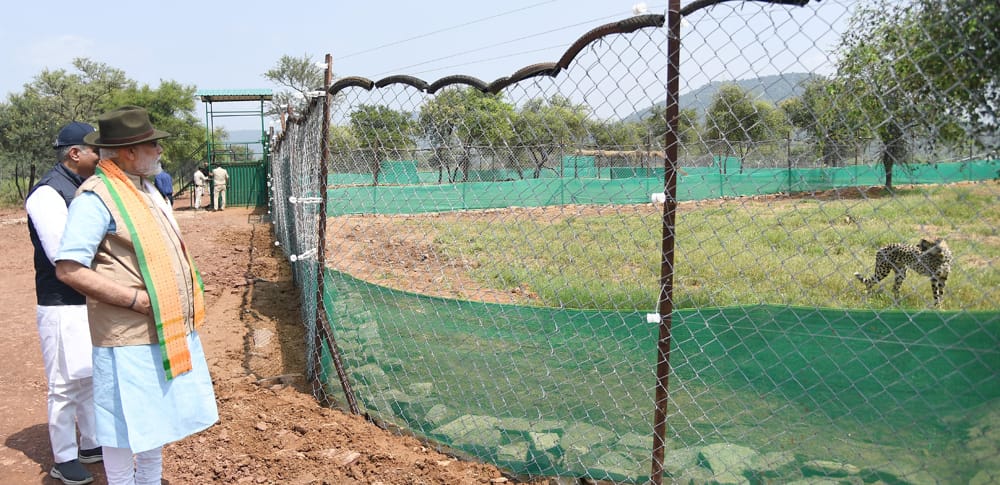Forget Samarkand, the foreign relations story out of India that’s been getting the most attention of recent times is about animals. Cheetahs, to be specific: eight of the big cats recently arrived on the Indian subcontinent from Africa, in a quest to reintroduce the species to the region.
Conservationists and government are all hopeful that the re-introduction will help reinvigorate local biodiversity, and consequently the local economy. The move comes after many years of agitation to try to get the big cats back to central India, which were hunted to extinction decades ago. The last confirmed sighting of an Indian cheetah was in 1952 – when a local prince hunted and killed three of them.
It hasn’t been an easy task. Earlier, there were plans to import cheetahs from Iran, which is home to the last remaining Asiatic cheetahs. But these moves were thwarted when the experts involved – researchers from the Persian Wildlife Heritage Foundation – were jailed for spying in 2016. Now, Asiatic cheetahs are expected to die out in Iran.
The African cheetahs, coming from Namibia and currently in Gwalior, in central India, are a different sub-species to the Asiatic ones, so success is not a given, although hopes are high. In any case, the very fact that the airlift happened is cause for celebration.
Animal nationalism is a real issue, where nation states use their animal populations as a tool of resistance, of enforcing borders or as national emblems. But animals are truly borderless – so attaching an animal to national identity can sometimes be a quixotic exercise.

It isn’t the first time that conservationists have tried to reintroduce a species to India, but hopefully will be more successful than previous attempts. Animal nationalism is usually cross-border, but in the case of the Asiatic lion, intra-country tensions raised their shaggy heads.
The only Asiatic lions in India are found in Gir, in Gujarat. Authorities in the central Indian state of Madhya Pradesh has wanted a number of the lions moved to its wildlife reserves, mostly for the health of the lion population, in the understanding that having them in two locations would be better than one, particularly given the low numbers (only around 600 remain). But Gujarat’s government refused, saying the lions were the “pride of Gujarat” and would not be leaving the state.
Elsewhere, big cats are in frame in Himalayan regions spanning India and Nepal. There has been a concerted effort over the past 12 years to revive the tiger population, with major global projects such as the International Tiger Project. As part of this, in 2010 Nepal pledged to double its tiger population. And in good news, on World Tiger Day on 29 July this year, the country announced it had not just achieved this, but indeed tripled its tiger population, thanks to efforts in protecting habitats and working on ending poaching. The announcement came during the Chinese zodiac Year of the Tiger, so was a particular win for the country.
But tracking the tiger population had admittedly caused headaches. Both the governments of Nepal and India have committed substantial resources towards boosting the big cat headcount – so when tigers cross over the border, which country gets the credit for the headcount? It might not be cricket but it’s apparently pretty competitive. Nepal understandably does not want Delhi to take bragging rights for its hard work in animal husbandry.
To its credit, Nepal did acknowledge India’s contribution in reaching the goal. Part of the solution was to set up parks that spanned Nepal and India to form wildlife zones for the animals.
The same idea is now being called upon again. They’re called peace parks, as they cross borders. There is a one in the works for Nepal, Bhutan and India with an MoU drafted in 2019 to explore setting one up. If it goes ahead – and there’s admittedly been no sign of that since then – it would include biodiversity-rich landscapes in adjacent areas of the three countries, and would be an extension of the existing Manas park in Assam. Authorities say it would allow elephants to roam freely, and would “maintain the natural connectivity of wildlife species, undisturbed by political boundaries”.
Cross-border relationships undisturbed by political boundaries? Now that’s a goal.

